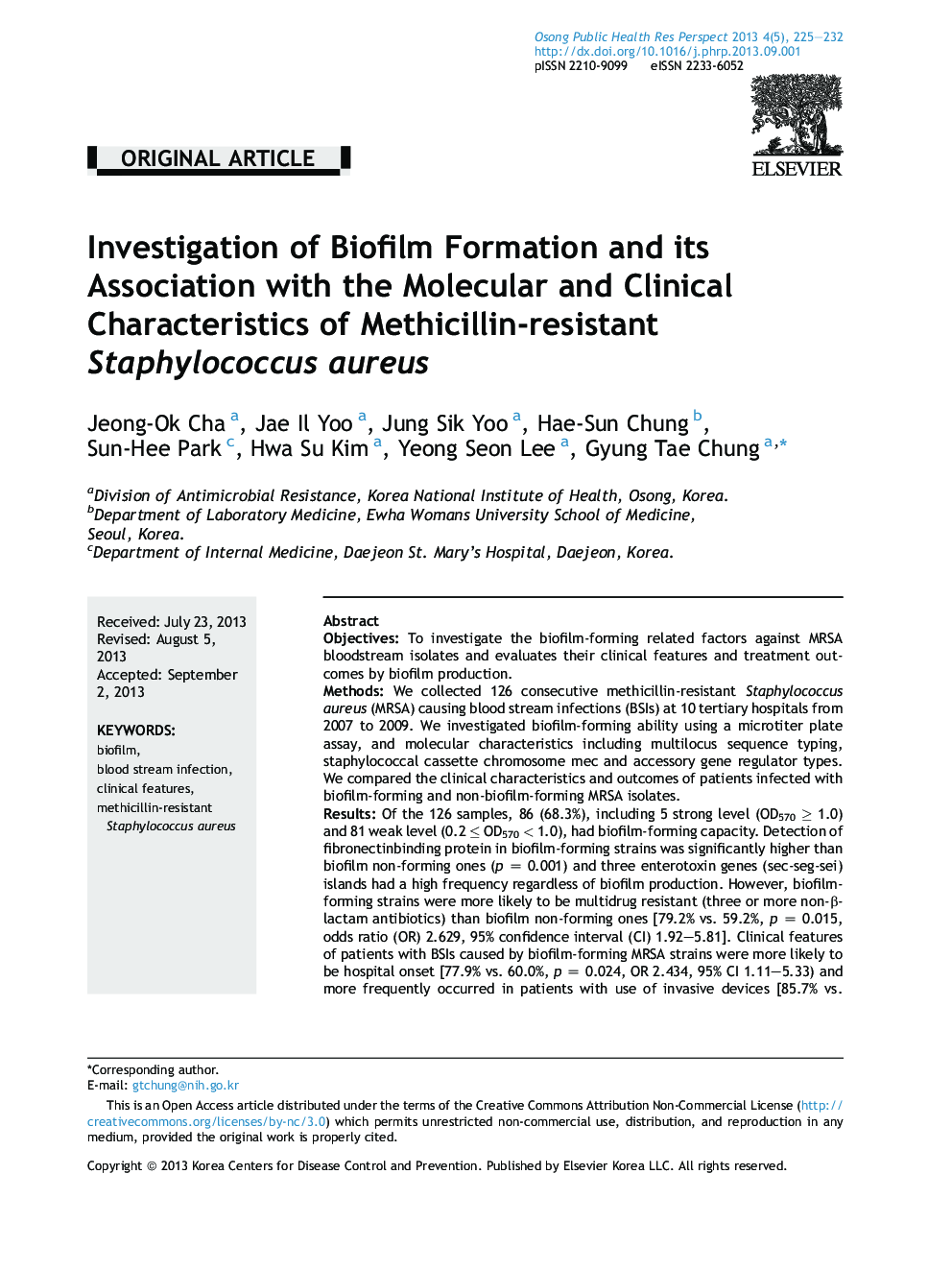| Article ID | Journal | Published Year | Pages | File Type |
|---|---|---|---|---|
| 4202001 | Osong Public Health and Research Perspectives | 2013 | 8 Pages |
ObjectivesTo investigate the biofilm-forming related factors against MRSA bloodstream isolates and evaluates their clinical features and treatment outcomes by biofilm production.MethodsWe collected 126 consecutive methicillin-resistant Staphylococcus aureus (MRSA) causing blood stream infections (BSIs) at 10 tertiary hospitals from 2007 to 2009. We investigated biofilm-forming ability using a microtiter plate assay, and molecular characteristics including multilocus sequence typing, staphylococcal cassette chromosome mec and accessory gene regulator types. We compared the clinical characteristics and outcomes of patients infected with biofilm-forming and non-biofilm-forming MRSA isolates.ResultsOf the 126 samples, 86 (68.3%), including 5 strong level (OD570 ≥ 1.0) and 81 weak level (0.2 ≤ OD570 < 1.0), had biofilm-forming capacity. Detection of fibronectinbinding protein in biofilm-forming strains was significantly higher than biofilm non-forming ones (p = 0.001) and three enterotoxin genes (sec-seg-sei) islands had a high frequency regardless of biofilm production. However, biofilm-forming strains were more likely to be multidrug resistant (three or more non-β-lactam antibiotics) than biofilm non-forming ones [79.2% vs. 59.2%, p = 0.015, odds ratio (OR) 2.629, 95% confidence interval (CI) 1.92–5.81]. Clinical features of patients with BSIs caused by biofilm-forming MRSA strains were more likely to be hospital onset [77.9% vs. 60.0%, p = 0.024, OR 2.434, 95% CI 1.11–5.33) and more frequently occurred in patients with use of invasive devices [85.7% vs. 61.2%, p = 0.002, OR 3.879, 95% CI 1.61–8.97]. The other clinical features were compared with the clinical outcomes of the two groups and were not significant (p > 0.05).ConclusionBiofilm-forming MRSA strains showed higher frequency of fnbB gene than biofilm non-forming ones and more incidence rates on particular genotypes. And, their patient's features were not significantly different between two groups in this study, except for several clinical factors.
